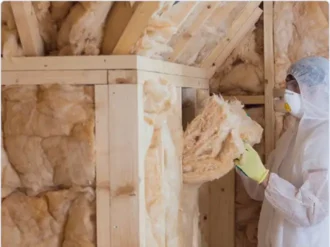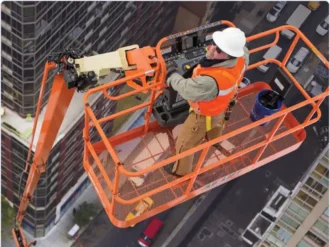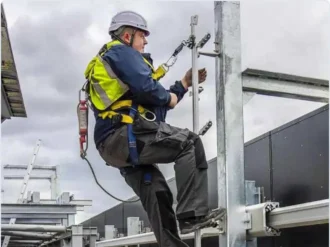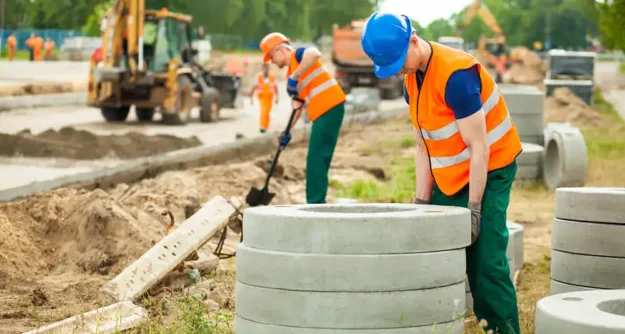Introduction
Concrete is used extensively in bridges, roads, dams, pipes, drains, and buildings. Employees in both construction and the manufacturing of concrete are exposed to this composite material on a daily basis but may be unaware of its hazardous nature. To avoid serious work-related injuries, these employees must receive rigorous training and be granted access to appropriate personal protective equipment.
Potential Hazards
Employees working with concrete are most likely to face the following risks:
Exposure to Cement Dust and Asbestos.
Although materials that contain asbestos are not dangerous when intact, they become hazardous when they release asbestos fibers into the air as a result of being broken down or drilled through. Such processes occur frequently on construction sites and in concrete manufacturing, where workers are exposed to cement dust at all times. Without proper protection, this can cause issues that range from mild irritation of the eyes, skin, and upper respiratory system to silicosis and even lung cancer.Exposure to Wet Concrete.
While wet concrete is less likely to produce cement dust, it is no less risky to handle. Most notably, if workers come in contact with wet concrete without proper protection, they can experience skin irritations, as well as first-, second-, and third-degree chemical burns. Hexavalent Chromium – a compound found in concrete – has also been shown to cause severe allergic skin reactions and chrome ulcers.Improperly Handled Vehicles.
Construction employees are often required to use aerial lifts and other, similar vehicles in order to achieve the necessary height to pour concrete and place bricks. When handled poorly, these vehicles can become dangerous for both the operator and his or her proximate co-workers.Accidental Falls
Same-level falls and falls from great heights are some of the most dangerous risks commonly associated with construction work. Employees working with concrete are frequently exposed to such hazards and must be able to properly identify and prevent the latter in order to reduce the number of incidents.
Incident Prevention
Over the previous decade, governmental agencies have placed an ever-increasing emphasis on safety training for all construction workers, who, in spite of recent efforts, continue to hold some of the most dangerous jobs in Canada. Given the circumstances, rigorous safety courses and assessments performed on a yearly basis remain the best way to prevent further incidents.
In addition, several measures can be implemented by employees working with concrete to minimize the hazardous nature of this material. To avoid exposure to cement dust and other harmful airborne substances, workers can use proper respirators, apply soap and water to rinse off dust from their skin, and only eat and drink in designated, dust-free areas.
When working with wet concrete, employees should wear eye protection, waterproof boots, alkali-resistant gloves, and overalls that fully cover their legs and arms. Machinery should be guarded at all times, while boom-supported platforms and other vehicles should always be inspected for safety before use.
Recommended Safety Courses



What You Can Do to Stay Safe
To this day, Construction remains one of the most dangerous job sectors in Canada. This makes it all the more pressing that employees in this industry are rigorously trained before they step on a construction site. Since working with concrete is such an integral part of a construction laborer’s job, safety courses in asbestos awareness, fall arrest, and other potential hazards should be made immediately available.
If working with concrete is something that you are required to perform often, you have the right to be made aware of the dangers of this task, as well as the measures that can help you stay safe. For a complete list of safety courses best suited for construction employees, please visit our corresponding industry page and select your specific job.

